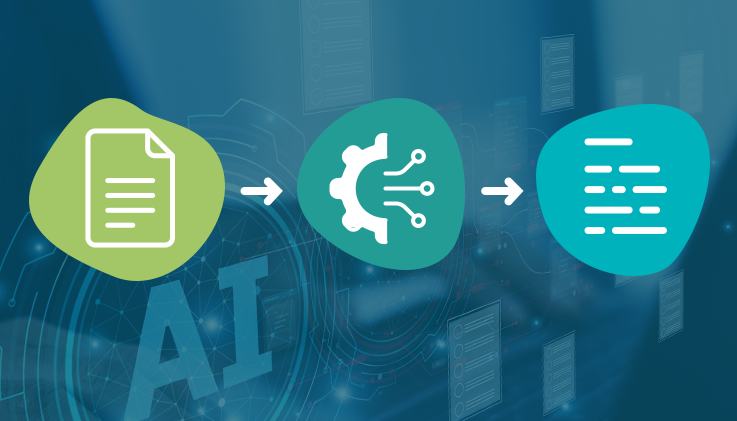Key points
-
Artificial intelligence (AI) continues advancing and profoundly changing the workplace.
-
The rising adoption of robots across different verticals of end-use industries is increasing businesses' productivity.
-
Huge investments towards developing AI and robots by commercial enterprises have led to economic growth.
"AI can be our friend." Bill Gates, co-founder of Microsoft.
One could not agree more with Gates about the way AI enables the engagement of robots in the workplace, and they are working hand in hand with knowledge workers. Day by day, the functioning of AI is getting more flexible. AI-programmed robots,
voice-enabled computing, AI healthcare monitoring tools, etc., are being adopted drastically by different companies from multiple industries.
Automating production processes with the help of AI produces quality products more efficiently and quickly. If we look around, almost all enterprises are integrating artificial intelligence with their products to add more value and make them more dynamic. According to Gartner, humans, AI, and robots will define the new workplace during the next ten years.
Five benefits of humans working together with AI and robots
1. Employee satisfaction
Adopting robots at the workplace can make employees question their job security. Workers are mainly concerned about robots gradually robbing their jobs or replacing them. However, with the rise of robotics, this may no longer be the case. According to research conducted by Gartner, AI will eliminate 1.8 million jobs by 2020 but will create 2.3 million new positions in the same time frame.
Conversational robots, or conversation bots, are replacing traditional robots. Conversation bots can work directly with humans because they have natural language processing (NLP) and machine learning (ML) technology to understand their working conditions. Virtual assistants function similarly to artificially intelligent colleagues who can safely work with coworkers.
Many employees spend the majority of their time on mundane tasks. These repetitive and lengthy tasks, such as routine data entry, make them feel undervalued. Thus, robots would reshape the roles of humans in their workplace. Industrial robots have driven labor productivity and economic growth. There is no doubt that robots will have a major impact on the workforce of enterprises globally. Robots support companies to maximize their employees’ skills. There is a lack of skilled workers across industries. Therefore, to do the jobs that need to be done, it is difficult to find enough suitable employees.
In many ways, robotics help companies to maximize their existing employee resources and to create a competitive advantage.
2. Higher productivity and lower costs
Pace and productivity matter. Using robots, one can achieve both and get a higher output for a lower cost. In other words, there has to be a positive return on investment for your business. Automating functions like material handling has also created a better environment for workers. Using AI and machine learning, systems can test hundreds of mathematical models of production and outcome possibilities. The results are more precise in their analysis while integrating new information, such as new product introductions or sudden changes in demand.
Analytics combined with machine learning will record and evaluate everything, including the beginning stages of quotes while establishing the supply chain. By integrating AI and machine-learning algorithms into procurement, strategic sourcing, and cost management, the production process can be accelerated, thus meeting production deadlines. When used correctly, robots do not replace but boost human efforts.
3. Meeting demands
Automation helps fulfill capacity requirements by stabilizing the level of productivity. It allows companies' resources to meet the customers' demands and employees to meet the companies' demands. Automation accelerates the production or development process as a whole. It helps companies accomplish tasks within the given time frames and creates a scope for doing more tasks they may have previously had to turn away.
Increased human-machine collaborations can yield great business value for your organization today. At Walmart, a task that takes employees one month to complete was completed in 24 hours. The task was done using sophisticated drones that fly through the warehouse, scan items, and locate misplaced items. This is how AI helped Walmart to forecast demand more precisely with the help of automation.
Another example of successful automation is the California-based finishing company Richmond, which increased productivity by a factor of four after it purchased its first robot painter. What is more, Richmond achieved this success without laying off anybody.
4. Quality control
People cannot achieve precision, but robots can—in a shorter time. Workers cannot work 24/7 and do quality control for numerous products while maintaining the pace. While we talk about quality, it does not only mean doing quality checks all the time. Enhancing the quality is equally important. OwlDesk is customer support software powered by artificial intelligence. It is designed to make customer support interactions easier. The ThinkOwl customer service software suite is contextually aware and understands natural languages to help support teams interact easily with customers while addressing complex service requests.
5. Employee experience
A productive, positive employee experience has emerged as the new way of building a bridge between employer and employee. Employee engagement, one of the major factors in today's economy, is declining. Gallup research shows that globally, only 13% of employees are highly engaged. This can be reduced by involving robots in the workplace and balancing the workload. Employees expect not only a better-designed experience but also new models of delivering work. A study by Oracle states that 93% of people would trust orders from a robot at work.
To conclude, companies that adopt robots tend to deliver high-quality products using fewer resources. Robots are likely to increase workers' productivity to another level, which translates into economic gain and GDP growth, from which everyone can benefit.
Say goodbye to overwhelming workloads and hello to smoother operations with ThinkOwl, the AI-powered service desk software. Streamline your customer service operations, manage and delegate tasks, track issues efficiently, and boost productivity for happier customers and a more successful support team. Try OwlDesk today. Sign up for a 30-day free trial now.












